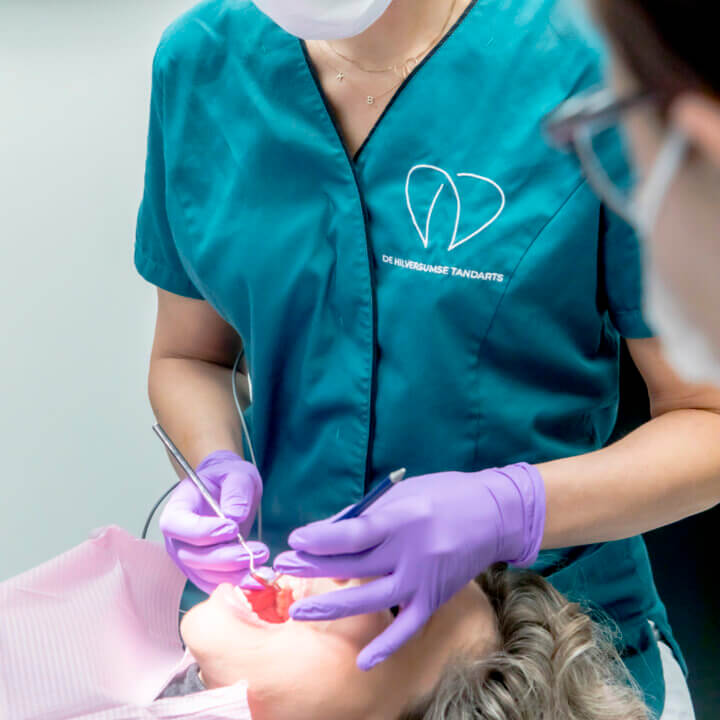Careful placement of fillings
When making a filling, all the affected tooth material (enamel and dentin) is removed. This drilling can be sensitive and is therefore usually done under local anaesthesia. This is always done by mutual agreement. When the hole is deeper and closer to the nerve, the risk of post-operative pain is higher. Once all caries have been removed and the surface is nice and clean, the resulting defect is filled. For this, we usually use composite, a glass-filled synthetic resin available in various colours and clarity. The composite is chemically bonded to the tooth surface and is clay-like when applied, allowing it to be modelled into nice shapes.
It is then cured with a lamp. During this curing process, the material shrinks slightly. If there is a lot of shrinkage stress, this can cause after-pain. This is why the white fillings are applied in thin layers, minimising shrinkage stress and post-pain.
After finishing and polishing, the filling is completely finished so you can use your tooth again immediately.


